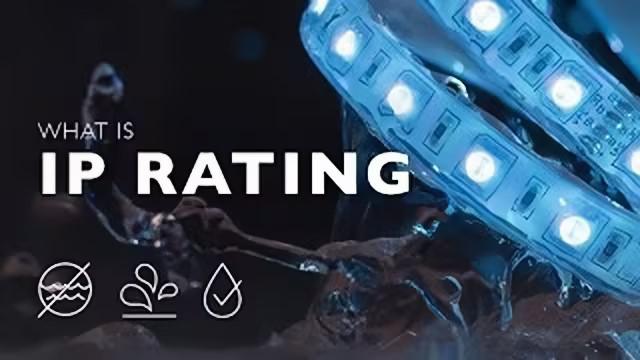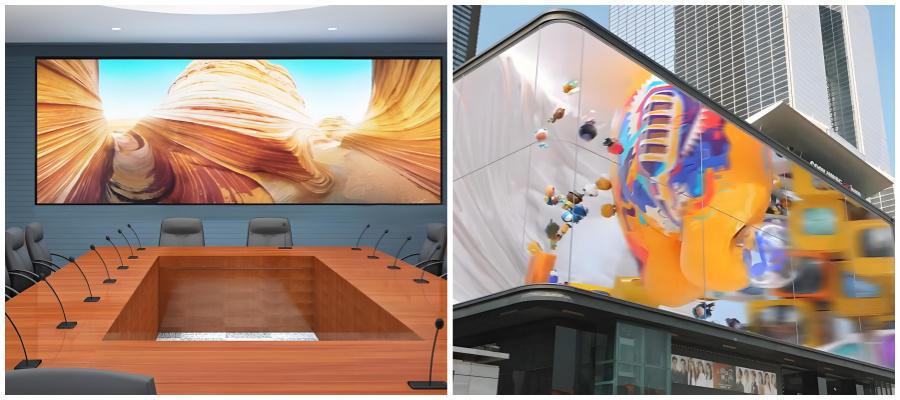With the rapid development of LED display technology, LED screens have been widely used in various fields such as outdoor advertising, sports venues, and concert sites. However, the environmental conditions in these locations can vary greatly: some areas endure scorching heat, others face heavy rain, some are full of dust, and in some industrial environments, LED displays must withstand harsh chemicals or high temperatures.
In such conditions, how can we ensure that LED displays operate stably? The answer lies in the “IP rating” of the LED display, which is a key indicator directly related to the device's lifespan.

What is the IP Rating?
The IP (Ingress Protection) rating is a protection standard established by the International Electrotechnical Commission (IEC) to measure the ability of electronic devices to resist dust, water, and other environmental factors. For LED displays, the IP rating acts as a kind of "dust and water insurance," directly determining whether the device can operate stably in specific environments for extended periods.
What Does the IP Rating Mean?
The IP rating consists of two digits, each representing the device’s protection level for dust and water. The first digit represents dust protection, ranging from 0 to 6, with higher numbers indicating better protection. The second digit represents water protection, ranging from 0 to 8, with higher numbers indicating better resistance.

Here is a breakdown of what the numbers represent:
|
Protection Level |
Solid Protection (1st Digit) |
Liquid Protection (2nd Digit) |
|
0 |
No protection | No protection |
|
1 |
Protection against objects larger than 50mm | Protection against vertical drops of water |
|
2 |
Protection against objects larger than 12.5mm | Protection against water drops when tilted up to 15 degrees |
|
3 |
Protection against objects larger than 2.5mm | Protection against spraying water |
|
4 |
Protection against objects larger than 1mm | Protection against water splashes from all directions |
|
5 |
Protection against dust, limited ingress | Protection against strong water jets |
|
6 |
Completely dust-tight | Protection against powerful water streams |
|
7 |
/ |
Protection against temporary immersion (up to 1 meter) |
|
8 |
/ |
Protection against continuous immersion |
Which IP Ratings Are Suitable for Different Environments?

Indoor LED displays typically have lower IP ratings, usually ranging from IP20 to IP30. These displays are used in exhibition halls, shopping malls, conference rooms, and other environments where exposure to rain or dust is minimal. The design is generally simple, focusing on providing clear visuals and excellent color reproduction.
Semi-Outdoor LED Displays
Semi-outdoor LED displays generally have IP ratings ranging from IP40 to IP55 and are found in places like bus stops, shopping mall exteriors, and street-facing billboards. Since the environment may experience some weather variations, such as direct sunlight or occasional rain, these screens need to have a certain level of dust and water resistance to ensure stable operation in semi-outdoor environments. They also tend to have higher brightness to ensure visibility even in daylight.
Outdoor LED Displays
Outdoor LED displays generally have higher IP ratings, typically IP65 or above, and are widely used in public squares, sports venues, stations, airports, and other outdoor locations. Given the complexity and variability of outdoor environments, these screens must withstand rain, dust, and other harsh weather conditions to ensure stability and durability in extreme temperatures and stormy conditions.
How to Choose the Right IP Rating for LED Display?
Usage Environment: Choose the appropriate IP rating based on the specific requirements of the installation environment. If the screen is in an outdoor or humid, dusty area, it’s recommended to choose an LED display with an IP65 rating or higher. For indoor environments, an IP30 to IP54 rating will usually suffice.
Display Performance: LED displays with different IP ratings may vary in brightness, clarity, and color performance. When selecting, consider factors such as the ambient light in the environment. For example, in bright outdoor settings, a screen with higher brightness may be required, and higher IP-rated displays will better protect the display quality.
Maintenance Needs: Choosing the right IP rating can help reduce maintenance frequency and costs. LED displays with higher IP ratings usually have stronger protective capabilities, reducing the need for frequent cleaning and maintenance. On the other hand, displays with lower IP ratings may require more care and cleaning.
Budget: Higher IP-rated LED displays are generally more expensive, so it's essential to balance the budget with actual needs. If the usage environment is harsh, investing in a higher IP rating is necessary, while lower IP-rated displays can be considered for indoor use or environments with fewer harsh conditions.
Brand and After-Sales Service: It’s always advisable to choose LED screen manufacturers with reputable brands, such as Leyard, Unilumin, Absen, and our own Cailiang, among others. A reliable brand not only offers high-quality products but also provides comprehensive after-sales service, ensuring timely resolution in case of any issues.
Common Misconceptions About LED IP Ratings
- Myth 1: The Higher the IP Rating, the Better
Many people assume that LED displays with higher IP ratings are always better. However, the most important factor is selecting the appropriate IP rating for your specific needs. An overly high IP rating may unnecessarily increase costs and may not be suitable for your environment.
- Myth 2: Waterproof = Moisture-proof
Waterproof and moisture-proof are two different concepts. A high waterproof rating does not mean the device can withstand prolonged exposure to water. Continuous exposure to moisture may still cause seals to degrade. Therefore, even for IP67 or IP68-rated devices, regular inspection and maintenance are necessary.
- Myth 3: Indoor Environments Don’t Need Dust Protection
Even in indoor environments, if there is significant dust (e.g., in factory workshops), a minimum dust protection level of IP5X is necessary to prevent dust buildup inside the device, which could affect display performance and longevity.
Conclusion
When selecting the right LED display, it’s crucial to understand the meaning of different IP ratings and their suitable environments. By choosing an LED display that meets the required dust and water protection standards, you can ensure maximum protection for the device and extend its lifespan.
We hope this guide helps you better understand LED IP ratings and make informed decisions so that your LED display continues to shine even in challenging environments!
If you're still unsure which LED display is best for your application, feel free to contact us at Cailiang for free advice and solutions!
Post time: Mar-27-2025







